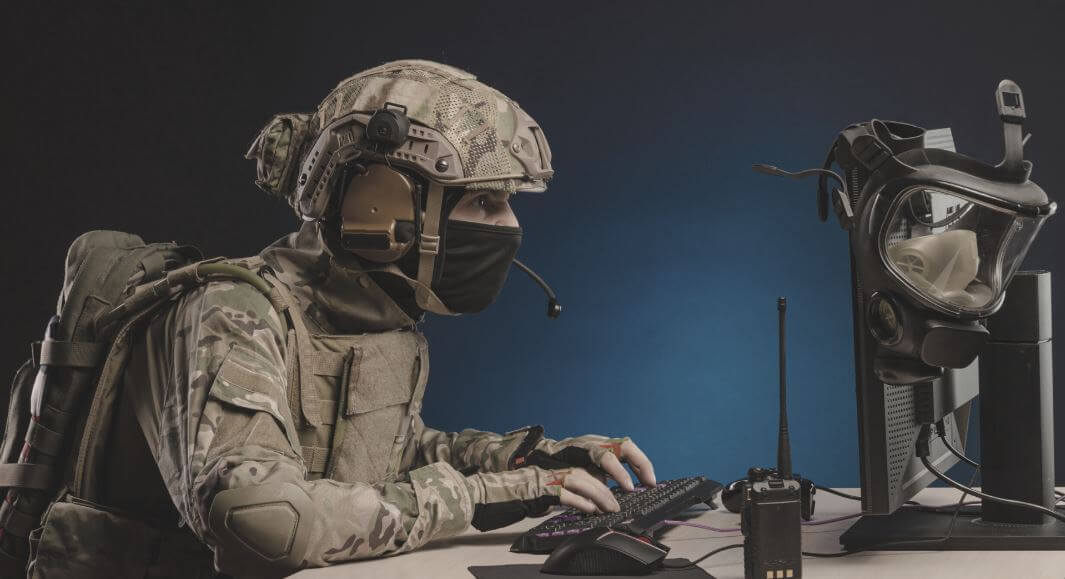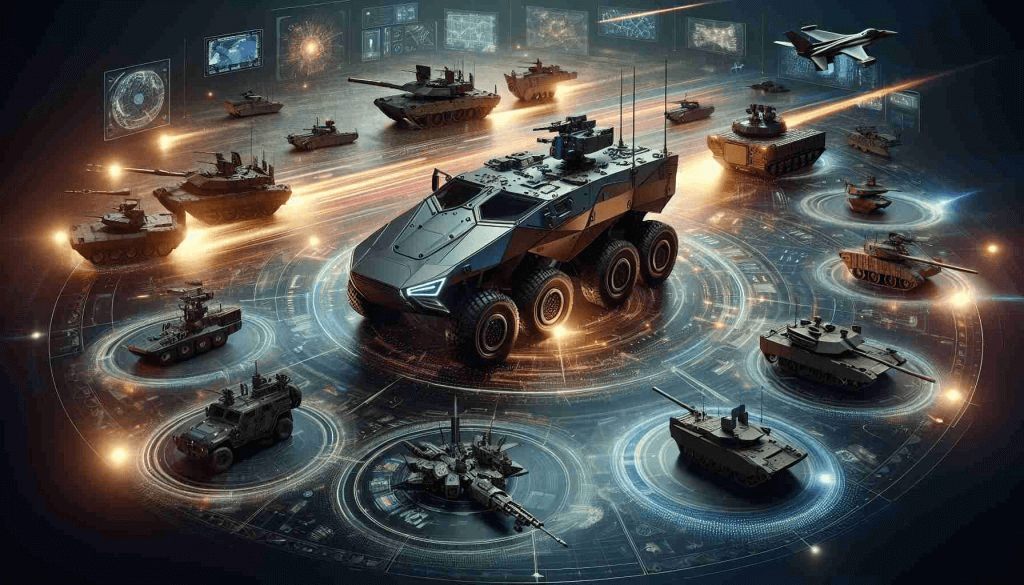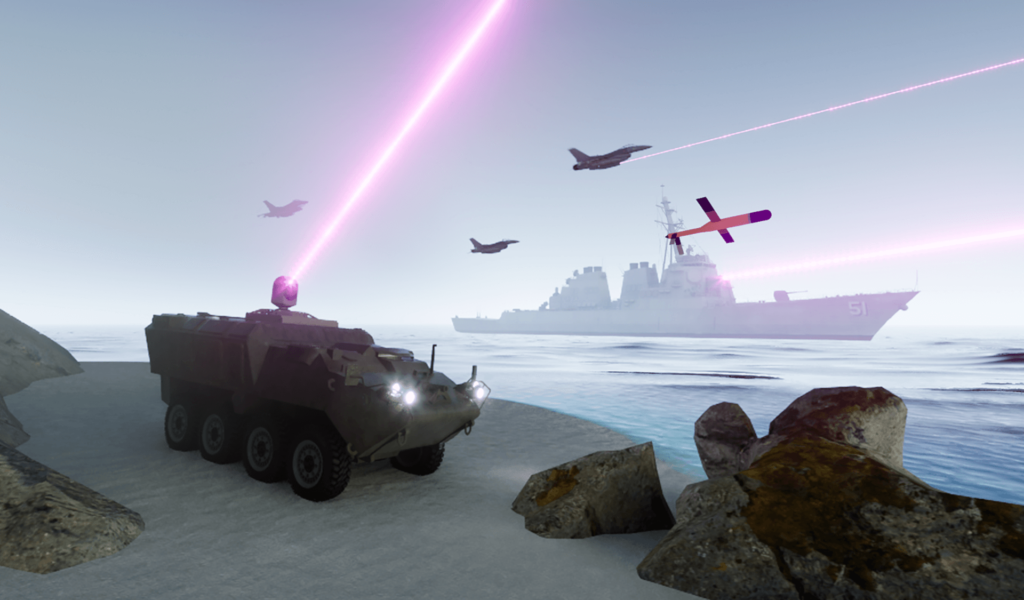
The 21st century has witnessed a flurry of military innovations, blurring the lines between science fiction and reality. From human-like robots to self-driving vehicles; smart phones to top-of-the-line computers the 21st century has witnessed technology evolution at speeds never experienced before.
One of the principal drivers behind this change — is the military. Experts say the new decade will see many more advances in unmanned vehicles, artificial intelligence, aircraft, maritime vessels, land vehicles, cyber security, medical technologies, and such areas.
Choosing the “top 10” is not easy considering the fact that each advancement impacts different aspects of warfare. However, here are 10 major innovations that have significantly reshaped the military landscape:
1. Unmanned Aerial Vehicles (UAVs)

An unmanned aerial vehicle (UAV) is an aircraft that carries no human pilot or passengers. UAVs—sometimes called drones—can be fully or partially autonomous but are more often controlled remotely by a human pilot. Drones have become a staple in modern military operations, providing surveillance, reconnaissance, and even offensive capabilities without putting human pilots at risk. The history of UAVs dates back to 1783 when Joseph-Michel and Jacques-Étienne Montgolfier demonstrated the first unmanned hot-air balloon in France. In 1849 the UAVs were used for the first time in warfare when Austrian artillery lieutenant Franz von Uchatius invented the balloon bomb and Field Marshall von Radetsky used them to attack Venice. In 1896 – Alfred Nobel, placed the first Camera on a UAV. Finally in 1935 De Havilland DH.82B Queen Bee aircraft used a low-cost radio-controlled drone for aerial target practice. It is considered by many to be the first modern drone. The Battle of Jezzine in 1982 was the first battle where drones made a considerable difference. In this war Israel employed drones to outmaneuver the Syrian Air force and win the battle with minimal casualties. The Vietnam War in 1985 once again made it clear that drones would have a growing role on the battlefields of the future. The Gulf War in 1991 was the first major conflict in which at least one drone was airborne from the start to finish.
In mid-2000– UAVs were for the first time permitted in US civilian airspace for search & rescue and disaster relief operations following the devastation caused by Hurricane Katrina. To make this happen predator drones with thermal cameras were used to detect the heat signatures of humans from up to 10,000 feet away. This marked the beginning of the consumer drone industry.
2. Cyber Warfare

Cyberwarfare has emerged as a critical aspect of military strategy in the 21st century. Cyberwarfare is a complex and ever-evolving domain. Understanding the technologies involved is crucial for both nations and individuals to prepare for and mitigate the risks associated with cyberattacks. As the digital landscape continues to evolve, responsible development and international cooperation are essential to ensure a secure and stable cyberspace for all.
While these technologies offer immense potential for both good and bad, their responsible development and ethical use is crucial. Already many nations are investing heavily in offensive and defensive capabilities to gain an edge in the digital battlefield. Here’s a glimpse into some of the key technologies shaping cyberwarfare:
Offensive Technologies:
- Exploit Kits and Zero-Day Attacks: These tools target vulnerabilities in software and hardware, allowing attackers to gain unauthorized access to systems and steal data, disrupt operations, or deploy malware.
- Malware and Ransomware: Malicious software like viruses, worms, and ransomware can infiltrate systems, encrypt data, and demand ransom payments for its release, causing crippling disruptions and financial losses.
- Distributed Denial-of-Service (DDoS) Attacks: These attacks flood targeted servers with overwhelming traffic, crashing websites and online services, often used to silence critical voices or disrupt essential infrastructure.
- Social Engineering and Phishing: Manipulative tactics like tricking users into clicking malicious links or revealing sensitive information can provide attackers with a foothold into targeted systems.
Defensive Technologies:
- Intrusion Detection and Prevention Systems (IDS/IPS): These systems monitor network traffic for suspicious activity and block potential attacks before they can cause damage.
- Encryption and Data Security: Encrypting data and implementing strong authentication protocols make it harder for attackers to steal or exploit sensitive information.
- Threat Intelligence and Vulnerability Management: Continuously monitoring cyber threats, identifying vulnerabilities in systems, and patching them promptly are crucial for proactive defense.
3. Precision-guided Munitions

Precision-guided munitions (PGMs) include missiles and bombs designed to precisely hit specific targets, thus minimizing collateral damage and increasing overall military effectiveness. These munitions use guidance systems to navigate and direct themselves towards their intended targets with a high degree of accuracy. The primary advantage of PGMs is their ability to strike specific target with minimal risk of damage to surrounding areas. The improved accuracy also results in fewer munitions being required to achieve the same objectives compared to traditional unguided weapons.
Precision-guided munitions may include:
- Guided Bombs (GBU): These are traditional bombs fitted with guidance systems. The guidance can be GPS-based, inertial navigation systems, or laser-guided. GPS-guided bombs use satellite navigation to reach their target, while laser-guided bombs rely on a laser designator to mark the target.
- Cruise Missiles: Cruise missiles are self-propelled guided missiles with an ability to fly for an extended period, sometimes at low altitudes. They use various guidance systems, including inertial navigation, GPS, terrain contour matching, or a combination of these, to reach their targets with precision.
- Precision Artillery Munitions: These include guided projectiles for artillery systems. They use guidance systems like GPS or inertial navigation to accurately hit targets at a distance.
- Anti-Ship Missiles: These are precision-guided munitions designed specifically to target naval vessels. They can use various guidance systems, such as radar, inertial navigation, or GPS, to home in on their targets.
- Precision-guided Rockets: Similar to artillery munitions, these are rockets equipped with guidance systems to improve accuracy.
- Unmanned Aerial Vehicle (UAV) Weapons: Drones equipped with precision-guided munitions can accurately target and strike enemy positions.
4. Stealth Technology

Stealth technology, also known as low observable technology involves techniques designed to make an aircraft, spacecraft, or other object difficult to detect by radar, infrared, sonar, and other detection methods. The primary goal of stealth technology is to reduce the signature of objects, making them less visible or identifiable by enemy sensors enhancing their ability to conduct covert operations. Stealth technology is primarily associated with military applications, including aircraft, naval vessels and submarines like the F-117 Nighthawk and B-2 Spirit. Developing effective stealth capabilities involves a combination of advanced engineering, materials science, and a deep understanding of various detection methods.
Key aspects of stealth technology include:
- Radar Cross Section (RCS): Radar cross-section refers to the amount of radar energy that is reflected back by the radar system. Stealth aircraft are designed to have minimal RCS, often achieved through special shaping, smooth surfaces, and the use of radar-absorbing materials.
- Shape and Design: Stealth vehicles are often characterized by their distinct shapes, featuring angles and facets that help scatter incoming radar waves in multiple directions, reducing the chance of detection.
- Materials: Special materials, such as radar-absorbing materials (RAM), are used to coat surfaces, absorbing and dissipating radar energy rather than reflecting it. These materials can be incorporated into the aircraft’s structure to minimize radar returns.
- Infrared Signature Reduction: In addition to radar, stealth technology addresses infrared (IR) detection. Heat-seeking missiles and other IR sensors can be countered through various means, including cooling measures, exhaust redirection, and coating surfaces with materials that absorb or disperse infrared radiation.
- Acoustic Signature Reduction: Submarines and naval vessels may employ stealth technology to minimize their acoustic signature, making them less detectable by sonar.
- Electronic Countermeasures (ECM): Stealth platforms often incorporate electronic countermeasures to disrupt or jam enemy radar systems, reducing the likelihood of detection.
5. Artificial Intelligence (AI)

Artificial intelligence (AI) have been an area of growing interest in the military. The idea behind is to streamline all kinds of military operations as well as enhance efficiency, capability, speed and decision-making. Some of the key areas where AI is being applied in the military include:
- Autonomous Systems: AI is used to develop autonomous systems, including unmanned aerial vehicles (UAVs or drones), ground vehicles, and naval vessels. These systems can perform tasks such as surveillance, reconnaissance, and even engage in combat without direct human intervention.
- Decision Support Systems: AI assists in processing vast amounts of data to provide decision support for military commanders. This includes analyzing intelligence data, predicting potential threats, and offering recommendations for strategic and tactical decision-making.
- Cybersecurity: AI is employed in cybersecurity to detect and respond to cyber threats. AI algorithms can analyze network traffic patterns, identify anomalies, and mitigate cyber-attacks in real-time.
- Predictive Maintenance: AI helps predict equipment failures and maintenance needs by analyzing data from sensors and monitoring systems. This proactive approach improves the reliability of military hardware and reduces downtime.
- Simulations and Training: AI is used to enhance military training through realistic simulations. These simulations can replicate complex scenarios, providing soldiers with immersive training experiences that help them develop skills for real-world situations.
- Logistics and Supply Chain Management: AI is applied to optimize logistics and supply chain operations, improving the efficiency of resource allocation, transportation, and distribution of military assets.
- Natural Language Processing (NLP): NLP allows for improved communication between humans and machines. AI-powered language translation systems are used to facilitate communication in multinational military operations.
- Target Recognition: AI algorithms are employed for the recognition of targets in imagery and video feeds, enhancing the accuracy and speed of target identification.
6. Electromagnetic Railguns

It’s a type of projectile launcher that uses electromagnetic forces to accelerate a projectile along a set of rails. It is a linear motor device that consists of two parallel conductors (rails) along which a sliding armature is accelerated by the electromagnetic effects of a current that flows down one rail, into the armature, and then back along the other rail. Railguns can achieve much higher velocities than conventional guns, which are limited by the explosive power of gunpowder. Railguns have been tested to speeds of over 11,000 km/h, which is more than Mach 9.
One of the main advantages of railguns is that they do not require any explosives or propellant to launch their projectiles. This makes them safer to store and transport, and it also reduces the risk of accidental detonation. However, railguns also have some disadvantages. They require a large amount of electrical power to operate, and they can be very expensive to build and maintain. Additionally, the high speeds of railgun projectiles can create a lot of wear and tear on the rails, which can limit the lifespan of the weapon.
Despite these challenges, railguns are still a promising technology with the potential to revolutionize warfare. They are being developed by militaries around the world, and it is likely that we will see them deployed in combat in the future.
7. Advanced Armor Materials

Innovations in materials science have led to the development of lighter yet stronger armor, providing better protection for military vehicles and personnel. These new materials and technologies offer enhanced protection while pushing the boundaries of weight, flexibility, and even self-healing capabilities. It’s important to note that the future of armor lies in combining these advanced materials and technologies to create ever-lighter, stronger, and more adaptable protection systems.
Here’s a glimpse into some of the most cutting-edge advanced armor materials:
1. Ceramics:
- Boron carbide (B4C): One of the lightest and strongest ceramics, B4C can stop high-velocity rounds and withstand multiple hits. It’s often used in composite armor plates, offering exceptional ballistic protection.
- Silicon carbide (SiC): Another incredibly hard ceramic, SiC excels against shrapnel and blast waves. Its heat resistance makes it valuable for protecting against thermal threats like explosions.
2. Composites:
- Ultra-high-molecular-weight polyethylene (UHMWPE): This woven fiber boasts remarkable strength-to-weight ratio, making it ideal for lightweight ballistic vests and helmets.
- Aramid fibers (Kevlar, Twaron): These classic composite materials remain relevant for their flexibility and ability to absorb and distribute impact energy. They’re often used in combination with other materials for enhanced protection.
- Metal-matrix composites (MMCs): Combining the strength of metals with the flexibility of polymers, MMCs offer a unique blend of properties. They’re being explored for applications like bulletproof glass and vehicle armor.
3. Nanomaterials:
- Graphene: This single-atom-thick layer of carbon atoms possesses exceptional strength, stiffness, and electrical conductivity. Graphene-based armor is still in its early stages but holds immense potential for lightweight, flexible, and even self-healing armor systems.
- Carbon nanotubes (CNTs): These tiny tubes made of rolled-up graphene sheets exhibit remarkable strength and electrical properties. CNTs are being researched for their potential to reinforce existing armor materials and develop entirely new nanocomposite armor.
4. Metamaterials:
- These engineered materials with artificially tailored properties are being explored for their ability to manipulate electromagnetic waves and even light. Metamaterial-based armor could potentially deflect projectiles or even render them invisible to radar.
5. Self-healing materials:
- Researchers are developing materials that can autonomously repair damage, which could revolutionize armor technology. Imagine armor that automatically heals cracks or even re-knits bullet holes!
8. Network-Centric Warfare

Network-Centric Warfare (NCW) is a military doctrine or approach to warfare that emphasizes the use of information networks to connect sensors, decision-makers, and weapons systems to achieve a decisive advantage on the battlefield. NCW is still evolving, and new technologies are emerging all the time. As these technologies become more mature, we can expect to see even greater integration and automation on the battlefield. Some of the benefits of NCW include increased speed and agility. NCW allows forces to react quickly to enemy movements and seize opportunities. Improved situational awareness – NCW gives commanders a clear picture of the battlefield, leading to better decision-making. Enhanced lethality- NCW allows for more precise targeting and coordinated attacks, leading to greater effectiveness against enemy forces. Reduced collateral damage- NCW’s focus on precision targeting minimizes civilian casualties.
Examples of NCW in action:
- Operation Iraqi Freedom: The US military used NCW to great effect during the invasion of Iraq in 2003. By sharing real-time intelligence and coordinating attacks, US forces were able to quickly overcome Iraqi defenses.
- Operation Enduring Freedom: NCW continues to play a role in the ongoing war in Afghanistan. The use of drones and other networked sensors has helped to track down Taliban and Al-Qaeda fighters.
9. Biometric Technologies

Biometrics, such as fingerprint and facial recognition, are increasingly used for secure access control and identity verification in military applications. These technologies leverage unique physical or behavioral characteristics to identify and authenticate individuals, offering enhanced security, efficiency, and operational effectiveness.
- Biometric systems like fingerprint scanners, iris scanners, and facial recognition technology can grant or deny access to sensitive military installations, equipment, and information. This helps prevent unauthorized personnel from entering restricted areas and compromising national security.
- Biometric data collected from soldiers and enemy combatants can be used to distinguish friend from foe on the battlefield. This can reduce the risk of accidental friendly fire and allow for more precise targeting of enemy personnel.
- Biometric verification can prevent unauthorized personnel from posing as friendly forces or accessing sensitive information using stolen credentials thus prevent deception and infiltration attempts.
10. Directed Energy Weapons (DEWs)

Directed energy weapons (DEWs) are a class of weapons that utilize concentrated beams of energy to engage targets, ranging from disabling electronics to physically destroying them. Unlike traditional projectile-based weapons, DEWs operate at the speed of light, offering incredible precision and minimal collateral damage. These futuristic arms are already being developed and deployed by major military powers.
Some of the DEWs may include:
- High-energy lasers (HELs): These weapons emit intense beams of light that can melt, vaporize, or ignite targets. They are effective against drones, missiles, and even armored vehicles.
- High-power microwaves (HPMs): These weapons utilize focused radio waves to disrupt or damage electronic systems. They can disable communication equipment, jam radars, and even detonate improvised explosive devices.
- Particle beam weapons: These theoretical weapons would use beams of charged particles to inflict damage on targets. While still in their early stages of development, they have the potential to be incredibly powerful and destructive.
Benefits of DEWs:
- Reduced collateral damage: DEWs offer highly precise targeting, minimizing the risk of harming civilians and infrastructure.
- Increased range and speed: DEWs operate at the speed of light, allowing for engagement of targets at much greater distances than traditional weapons.
- Non-explosive: DEWs do not require gunpowder or other explosives, making them safer to store and transport.
- Multiple applications: DEWs can be used for various purposes beyond combat, such as disabling drones that threaten critical infrastructure or disrupting communication networks used for illegal activities.
The future of warfare is uncertain, but one thing is clear: the pace of innovation in the military is showing no signs of slowing down. As these technologies continue to evolve, it will be crucial to navigate the ethical challenges, mitigate the risks of an arms race, and harness their potential for good to create a more peaceful and secure world.

